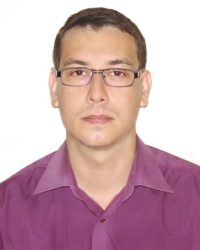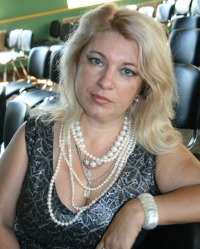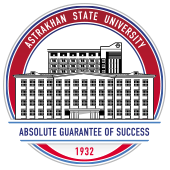Sports Socialization at ASU: Over 2, 000 Students Joined Us!
 03.10.2014
03.10.2014
Dr. Galina Palatkina, Dean of ASU’s Department of Pedagogics, Social Work, & Physical Training, and Professor Sergey Khrapov, Research Supervisor of the Program “Socialization: CDIO Technologies” have told about their realization of the sports extracurricular activities of Astrakhan State University.
 While introducing this project, its organizers based their concept on experience gained by the world’s top universities, including Harvard University, the University of Toronto, and Cambridge University, where youth sports are developed as club activities based on large-scale initiatives of student communities. “This project responds to global challenges of our times, as it aims to develop not just leadership, team-working, and communication skills, but also health-saving competences. Nowadays even high-class specialists often can’t endure competition at the labor market, if their health is bad”, Prof. Khrapov remarks.
While introducing this project, its organizers based their concept on experience gained by the world’s top universities, including Harvard University, the University of Toronto, and Cambridge University, where youth sports are developed as club activities based on large-scale initiatives of student communities. “This project responds to global challenges of our times, as it aims to develop not just leadership, team-working, and communication skills, but also health-saving competences. Nowadays even high-class specialists often can’t endure competition at the labor market, if their health is bad”, Prof. Khrapov remarks.According to Dr. Palatkina and to Prof. Khrapov, ASU has all the necessary conditions to provide healthy lifestyle for its community: it has 3 gyms, 4 fitness halls, 5 open sites within the campus area, and a stadium. The gyms and the fitness halls are equipped with comfortable cloakrooms and showers. The modern material base favors more efficient sport socialization at ASU.
The main goal of such activities, which include creation of various sport clubs, is to promote mass sports among students, orientation to a healthy lifestyle, and formation of communicative competencies, especially teamwork. That is why sport clubs are created to promote team sports: volleyball, football, basketball, handball, etc. “We realized two sessions now; each of them lasted two months”, Dr. Palatkina says. “After each session, we always sum up its outcomes at a conference that includes, besides official reports, a master class or an unofficial handball match arranged by our regional handball team. We’re glad that young sports people share not just their success, but also their problems at such meetings. In particular, we repaired gyms in some of our university buildings after one of those conferences”.
 Unfortunately, all the new things are at first resisted, as the two supervisors confess. At the initial stage, they faced a number of problems: they had to convince mentors that sports socialization is really feasible; they had to explain the goal of such activities to students. “We don’t aim to bring up masters of sports: our task is to develop young people’s competences in particular sports, to advance their abilities in sports to a higher level. That’s achieved by using specially developed stage-by-stage programs, whose participants learn about the history of that kind of sports, about its main rules, about refereeing, and they get the necessary game skills. As a result, students can become real fans; they can watch matches and discuss them”, Dr. Palatkina remarks.
Unfortunately, all the new things are at first resisted, as the two supervisors confess. At the initial stage, they faced a number of problems: they had to convince mentors that sports socialization is really feasible; they had to explain the goal of such activities to students. “We don’t aim to bring up masters of sports: our task is to develop young people’s competences in particular sports, to advance their abilities in sports to a higher level. That’s achieved by using specially developed stage-by-stage programs, whose participants learn about the history of that kind of sports, about its main rules, about refereeing, and they get the necessary game skills. As a result, students can become real fans; they can watch matches and discuss them”, Dr. Palatkina remarks.It was also uneasy to convince students to go in for sports that were unfamiliar for them. As a rule, those who are fond of volleyball do not wish to learn more about basketball, football, etc. But this problem has been overcome, too: the clubs have been renewed by 100%!
The handball club required special attention, as it turned out that our University has an acute shortage of students who could become leaders in this kind of sports. Our regional female handball team helped us: its members have become the first leaders and taught our young handball players how to play this game.
Speaking about outcomes of the first two sessions of the sports socialization, both Prof. Khrapov and Dr. Palatkina are proud to quote the number of participants of the 104 sport clubs – about 1, 500 people!
A third session has recently started. Its organizers have introduced a new kind of team sports (with two clubs already opened) – cheerleading dance. Gateball is to be promoted, too: all the necessary equipment has been purchased for this Japanese game, and our students have covered the relevant training program. All the participants of the sports socialization are looking forward to seeing a newly-opened swimming pool at the main building of our University, as that will make it possible to arrange teams for water polo and for some other sports. Streetball and korfball clubs are to be opened, too.
Over 700 students have already wished to take part in the 3rd session. Don’t miss your chance to join the sports culture of your University!
Interviewed by T.Yu. Gavrilkina (the Innovative Laboratory of Information Linguistics of ASU)


